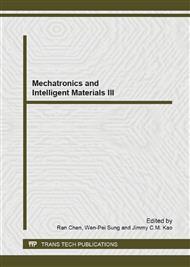p.1055
p.1059
p.1063
p.1068
p.1072
p.1077
p.1081
p.1085
p.1090
The Moving Target Detection under Complicated Background Base on BP Neural Networks
Abstract:
This paper aims at utilizing BP neural network and improved BP neural network in the extraction of moving targets from the static background and the motor background. Across introduces of L_M Optimization method to improve the BP neural network, combination the difference between the consecutive frames or difference from the background for the extraction of moving targets. The paper uses one types of image segmentation improved BP neural network for extraction of moving targets from the static background. We will obtain the same moved targets with the extraction of moving targets from the static background and the motor background. After experimental verification, this method on different objects in the context of the same detection ability is better.
Info:
Periodical:
Pages:
1072-1076
Citation:
Online since:
June 2013
Authors:
Price:
Сopyright:
© 2013 Trans Tech Publications Ltd. All Rights Reserved
Share:
Citation:


